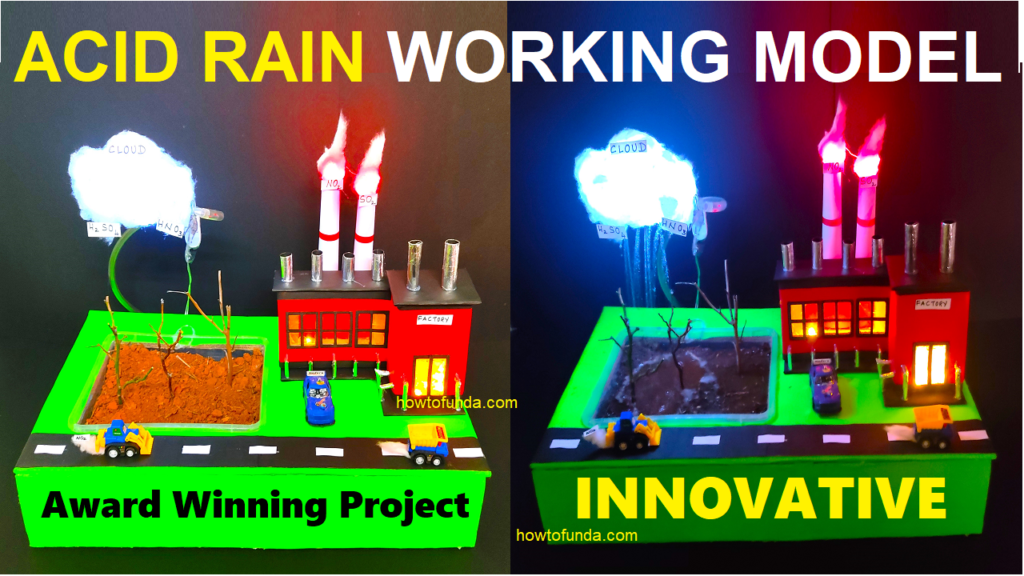What is Acid Rain?
Acid rain is a type of precipitation, such as rain, snow, or fog, that contains elevated levels of acidic components.
This phenomenon results from the release of sulfur dioxide (SO₂) and nitrogen oxides (NOₓ) into the atmosphere, primarily from human activities like burning fossil fuels and industrial processes.

Causes of Acid Rain:
- Fossil Fuel Combustion: The burning of coal, oil, and natural gas in power plants and vehicles releases sulfur dioxide and nitrogen oxides.
- Industrial Emissions: Factories and industrial facilities emit significant amounts of these pollutants into the air.
- Vehicle Emissions: Automobiles and trucks contribute to air pollution with sulfur dioxide and nitrogen oxides.
The Acid Rain Process:
- Emission of Pollutants: Sulfur dioxide and nitrogen oxides are released into the atmosphere through human activities.
- Transformation in the Atmosphere: These gases undergo chemical transformations, combining with water vapor and oxygen to form sulfuric acid (H₂SO₄) and nitric acid (HNO₃).
- Precipitation with Acidity: The acids mix with raindrops, snowflakes, or other forms of precipitation, creating acidic rain.
Environmental Effects of Acid Rain:
1. Aquatic Ecosystems:
- Water Acidification: Acid rain lowers the pH of lakes, rivers, and streams, making the water more acidic.
- Impact on Fish and Aquatic Life: Acidification harms fish and other aquatic organisms, affecting their reproduction, growth, and survival.
2. Soil and Terrestrial Ecosystems:
- Nutrient Depletion: Acid rain leaches essential nutrients like calcium and magnesium from the soil.
- Plant Damage: Soil nutrient depletion affects plant growth, making them more susceptible to diseases and other stressors.
3. Forests:
- Direct Tree Damage: Acid rain can directly damage trees by leaching nutrients from leaves and needles.
- Soil Effects: Acidification of soil harms the roots of trees and other plants.
4. Human Health:
- Air Quality: While acid rain itself is not harmful to human health, the pollutants that cause it contribute to air pollution, impacting respiratory health.
- Drinking Water: Acid rain can affect the quality of drinking water sources, particularly in areas with vulnerable water supplies.
5. Buildings and Monuments:
- Material Erosion: The acids in acid rain accelerate the decay of buildings, statues, and monuments made of limestone or marble.
- Cultural Heritage Impact: Acid rain poses a threat to cultural heritage, affecting historical structures and monuments.
6. Soil Productivity:
- Reduced Fertility: Acid rain depletes the soil of essential nutrients, impacting the productivity of agricultural lands.
- Crop Damage: Sensitive crops may suffer from the effects of soil acidification.
Mitigation and Solutions:
- Emission Reduction: Implementing measures to reduce sulfur dioxide and nitrogen oxide emissions from industrial sources and vehicles.
- Alternative Energy Sources: Transitioning to cleaner and renewable energy sources to decrease dependence on fossil fuels.
- Afforestation and Reforestation: Planting trees helps absorb pollutants from the air and mitigates the impact of acid rain on ecosystems.
- Environmental Policies: Enforcing and strengthening environmental regulations to limit emissions and promote sustainable practices.
Conclusion:
Acid rain remains a significant environmental challenge with widespread implications. Understanding its causes and effects is crucial for implementing effective solutions to protect our ecosystems, water resources, and human well-being. Through collective efforts and responsible environmental practices, we can work towards minimizing the impact of acid rain on our planet.

